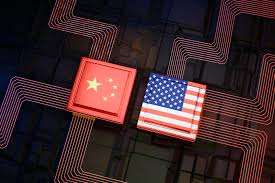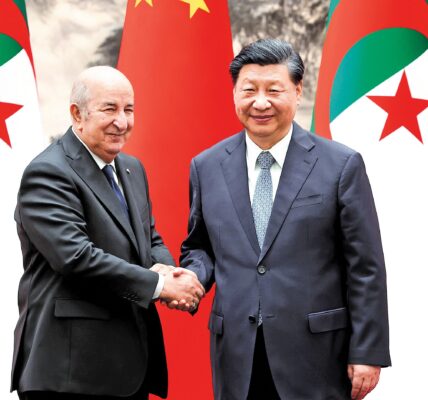In a stark reminder of the long-standing tensions between the United States and China, Beijing has once again called on Washington to eliminate the tariffs that have plagued their trade relationship. On April 13, 2025, China urged the U.S. to “completely cancel” the reciprocal tariffs that were imposed during the Trump administration. This call represents the latest development in a trade war that has shown few signs of abating.
As both nations continue to grapple with economic fallout, China’s government has expressed growing urgency for the U.S. to correct what it calls its “mistakes” in trade policy. These tariffs, which have impacted a wide range of products, have become a symbol of the deepening economic divide between the two global superpowers.
A Pressing Demand from Beijing
China’s recent appeal for tariff elimination comes amid ongoing frustration with U.S. trade practices. A Chinese official, in remarks made shortly after the call for tariff removal, described the U.S. tariffs as “harmful” to both sides and urged Washington to make significant changes. The official emphasized that the removal of tariffs would not only benefit China but would also help restore balance to the economic relationship between the two nations.
“We believe that the U.S. should take action to eliminate these unfair tariffs,” the official said. “This is not just about resolving a trade dispute; it’s about correcting a wrong that affects both our countries’ economic futures.”
U.S. Exemption of High-Tech Products
In a move that signaled some flexibility, the U.S. recently announced it would exempt high-tech products, including smartphones and computers, from the massive tariffs that have defined the trade conflict. The decision was seen as a response to ongoing pressure from the tech industry, which has been heavily impacted by the tariffs, particularly the 145% levied on Chinese electronics, including products like iPhones made by Apple in China.
However, China has been cautious in its response. Beijing labeled the U.S. decision to exempt high-tech products as a “small step” in the right direction but made it clear that it was not enough to resolve the broader issues at hand. “The removal of these specific tariffs does not solve the larger trade imbalance or address the root causes of the trade war,” a Chinese spokesperson said.
The U.S. Tariff Strategy and Its Impact on Chinese Electronics
The U.S. tariffs on Chinese electronics, particularly smartphones, have been one of the most contentious points of the trade war. While high-tech exemptions have provided some relief to the tech sector, the tariffs on Chinese-made products like the iPhone remain a significant burden. Apple, in particular, has been a target of these tariffs, with the company being forced to adjust its supply chains and pricing strategies to absorb the increased costs.
The tariffs have had a ripple effect across various industries, not just in China but also in the U.S., where businesses reliant on Chinese electronics have had to adapt to higher costs. This strategy has been touted as a means of pushing China to address what the U.S. sees as unfair trade practices. However, critics argue that it has done little to address the underlying issues and has instead placed a heavy financial burden on American consumers and businesses.
China’s Retaliatory Measures
In response to the U.S. tariffs, China has retaliated by raising its own tariffs on American products. On April 13, 2025, China implemented a 125% tariff on a wide range of U.S. goods, a measure that directly targets the agricultural and manufacturing sectors. The retaliatory tariffs are part of China’s strategy to exert pressure on the U.S. in the ongoing trade dispute, signaling that it will not back down easily.
China’s move is expected to have significant consequences for U.S. exporters, particularly in industries like agriculture, which has long relied on Chinese demand for products like soybeans, pork, and poultry. The tariffs will make U.S. goods more expensive in China, reducing their competitiveness in the Chinese market and potentially leading to decreased exports.
The Path Forward
As the U.S.-China trade war continues, the path forward remains unclear. China’s demand for the U.S. to eliminate its tariffs is unlikely to be met without significant negotiations and concessions. While the U.S. has taken steps to exempt certain high-tech products from tariffs, the broader issue of trade imbalances and intellectual property rights continues to loom large.
In the meantime, both sides are likely to continue playing a high-stakes game of economic brinkmanship, with the global economy hanging in the balance. The outcome of this dispute will not only shape the future of U.S.-China relations but could have far-reaching consequences for global trade and economic stability.




